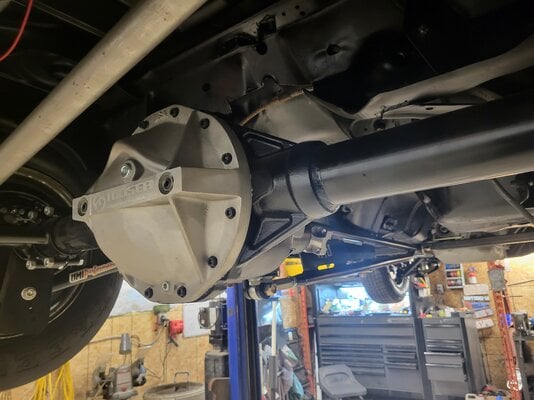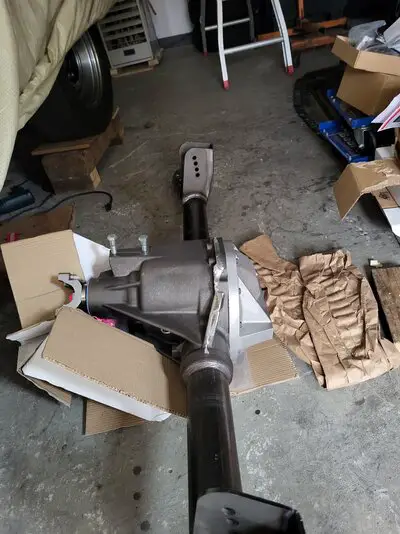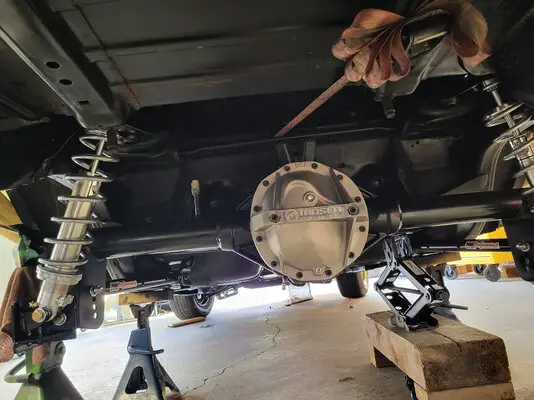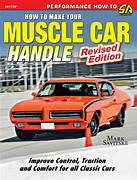This is at the mock up stage. I was planning on using a poly bushing, which is what is on a long F body torque arm. I have a link to connect it to another poly bushing but there is not much room or ground clearance for this idea. I might use one bushing only. Open to ideas, this is just an idea. I have no numbers or driving experience to report back yet but I am sure side to side will be more solid than any G body with 4 control arms. Driveshaft diameter and where the front gets mounted to is still to be sorted out. The arm is very close to the floor with the suspension compressed.
We will make a 1x2 bar for a 4L80E transmission crossmember and torque arm mount to reach the frame. Again, only at mock up stage. Provision for an exhaust pipe still to be fabricated in.
There is no binding. The droop travel is limited by my brake line. I might add a limiting strap.
There is no previous 60 to compare to and do not think I will have enough room to make an adjustable the front pivot point. If it doesn't work I'll weld it some later but no room is a factor.
My rear lower control arm brackets have adjustability and so does the pinion angle.
The rear is a G body with a 12 bolt center for an F body.
We will make a 1x2 bar for a 4L80E transmission crossmember and torque arm mount to reach the frame. Again, only at mock up stage. Provision for an exhaust pipe still to be fabricated in.
There is no binding. The droop travel is limited by my brake line. I might add a limiting strap.
There is no previous 60 to compare to and do not think I will have enough room to make an adjustable the front pivot point. If it doesn't work I'll weld it some later but no room is a factor.
My rear lower control arm brackets have adjustability and so does the pinion angle.
The rear is a G body with a 12 bolt center for an F body.
Attachments
Last edited:










